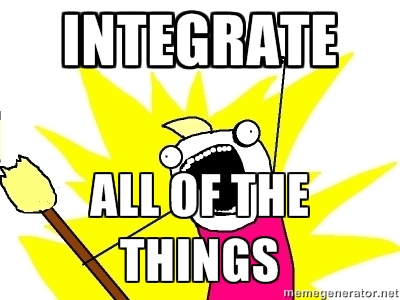Last updated at Mon, 15 May 2023 13:44:30 GMT

What is ChatOps you might ask? Well, if you are like me, you and your team may be already be doing it and you don’t even know it. On a recent visit to San Francisco I was telling one of our tech partners about our new Slack integration when he responded by saying, “Slack and Logentries, cool! Yep everyone is doing ChatOps these days…”
So what is ChatOps? ChatOps is an ultra collaborative way of running DevOps (and ultimately your business) including operating aspects of systems and infrastructure, through online chat.
In fact the guys at github have been promoting this approach to DevOps for some time. At the center of ChatOps is the concept of better communication amongst your team members and the systems that run your business.
Common tools people use as part of ChatOps include:
- A tool for team communication (e.g. Slack)
- Hubot – your companies personalized robot 🙂 Hubot allows you to connect APIs to your chat rooms and is best described by Marc Imbriaco of GitHub at Velocity New York as the ability to take input from chat and output somewhere else OR to take input from somewhere else and add it to chat.
- All of the tools you use every day… For example anything you use as part of your development and continuous delivery process such as jenkins, github, test automation tools, performance analysis tools (e.g. graphite), notification systems, logs …
If you want to get started check out Eric Sigler’s post on the pagerduty blog on how to get started with ChatOps.
Ultimately with ChatOps you can run your business through a chat room. You and your fellow team member can execute commands that a chat bot (like Hubot) is configured to execute through scripts and plugins. These can range from deployments, to performance test results, to live issues. Your team and systems collaborate in real-time as commands are executed and displayed and recorded via your chat room.
The benefits of ChatOps can change how your whole team works. ChatOps dealing with the pain of figuring out if a particular command was run by a colleague. It helps bring that work into the foreground, by putting all of it in one place. You can now see everyone’s actions, notifications and diagnoses in plain view which encourages transparency in your teams.
Furthermore, ChatOps is not only about TechOps – it is also BusinessOps. In other words, it is not only for the techies in your organization. You can also integrate billing systems (e.g. Recurly) or support systems (e.g. Zendesk) so that everyone in your organization can gain visibility into what is happening at any given time – ChatOps is ultimately helping to break down silos in your organization and allows for real time more-synchronous communication amongst team members.
ChatOps is changing the way teams communicate and has drastically reduced the requirement for internal email communications. Technologies like Slack are a big part of the growing popularity of ChatOps. At Logentries the best evidence for this growth has been seen through our feature request channel. Over that past few months requests for Slack integration has been overwhelming and has far outweighed any other integration request. Naturally we are delighted to announce that you can now easily directly integrate Logentries with Slack.
The most common use of this type of logging integration is to allow you to send notifications of any event of importance from across your system and services into your chat client for all to see. Typical examples include:
- System exceptions and errors
- Breaches in acceptable performance thresholds
- Anomalies in server resource usage (e.g. average CPU usage increasing by 50% over the past hour)
- New plan purchases – see everytime someone signs up as a new customer
- New feature usage – get notified when a new feature is used for the 100th time
This ensures that everyone in the organisation can understand the state of play and when something important has just occurred. Since logs are more and more frequently being used for a range of use cases (e.g. troubleshooting, monitoring, analytics) they are an important data source and in many organisations are often considered the intermediate language used to understand and communicate about systems and services in the daily ChatOps cycle.
Want to get started? Check out our new Slack integration here.


